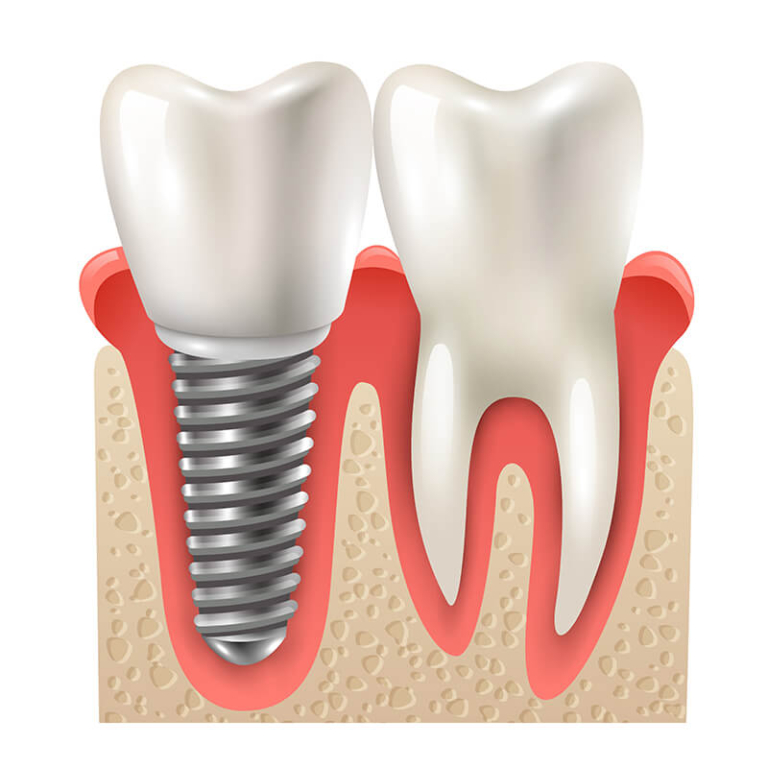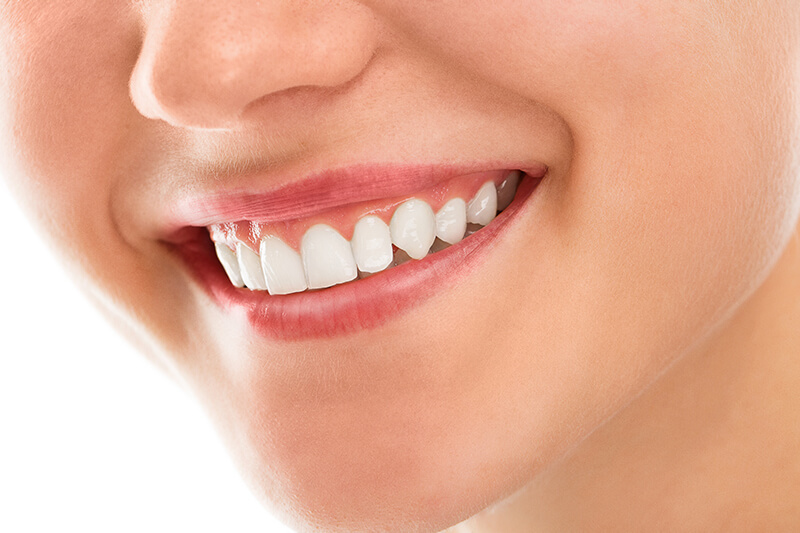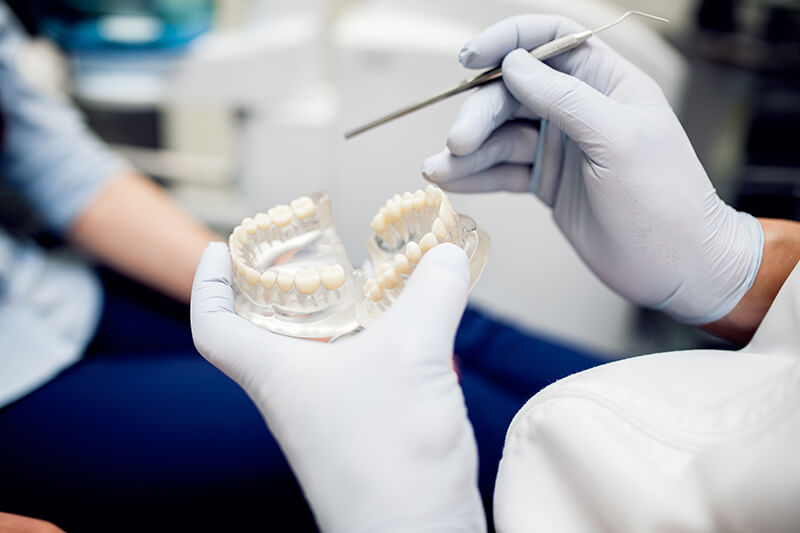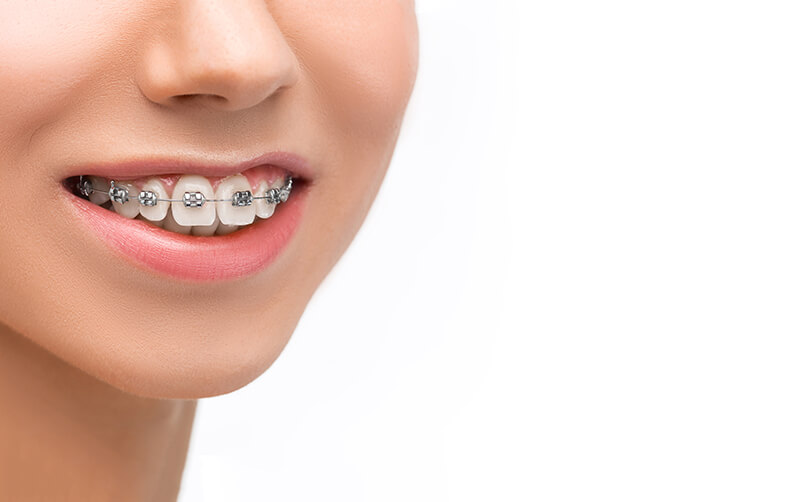Other Treatments
Aesthetics
Click to learn more
Online Nutrition Counselling
Click to learn more
Online Psychological Counselling
Click to learn more
We believe that all people are special and their treatment should be personalised. Rana medical consultancy provides services with our distinguished and successful boutique dental clinics in Istanbul, Antalya, Izmir and Ankara so that our patients could receive the most suitable treatment for them anywhere.
All of our clinics are equipped with the latest technology. Treatments are carried out by specialist dentists using the most advanced technology and techniques.

Implant is a biocompatible and artificial tooth root that is placed into the jaw bone instead of the missing teeth. Implants are generally made of titanium and placed into the bone tissue using a screw structure. It is a significant treatment method that is very commonly used to fill the gaps caused by lost teeth, as an alternative to bridges. In bridge prosthesis, required abrasion is performed on two neighboring tooth to the extraction gap, and prosthesis is built to fill the gap. When extraction gap is filled by an implant, no procedure is required on the neighboring teeth. Therefore, neighboring teeth to the extraction gap are protected. This is among the most significant advantages of implants.
Implant treatment is recommended to be performed as soon as possible after tooth extraction. Following tooth extraction, changes occur such as thinning of the bone in extraction area, growth of teeth across the extraction gap towards the gap, and turning of the neighboring teeth to the extraction gap towards the gap. Performance of implantation before such changes occur, protection of the oral structure and successful placement of the implant are quite important. Therefore, dentists recommend performance of implantation and tooth extraction in the same session under accurate conditions.
Implant treatment can be applied to everyone with good health with a quite high rate of success. In patients with systemic diseases, implant treatment is performed with the approval of relevant doctor if the disease in under control. Risk of failure of implants is higher in patients who have bad oral hygiene and do not perform the required oral care as compared to patients with a systemic disease under control. While smoking affects the health of implants negatively, implants can also be performed in smokers. However, these patients must take better care of their oral hygiene as compared to non-smokers.
As mentioned briefly, overall health condition, habits, jaw bone structure and condition of all patients are specific to that person. Thus, considering the tests performed and medical background, patient is informed about the treatment process and success rate by the dentist prior to implant treatment, and treatment is performed in line with the desires of patient.
Implant treatment is performed in individuals that have tooth loss due to various reasons, with the aim of filling the extraction gap. In tooth losses, people experience lots of trouble both aesthetically and functionally. Missing tooth may lead to eating disorders, problems in jaw structure and talking, impaired tooth set and aesthetic problems.
Thinning occurs in the jaw bones of individuals after tooth loss. Such thinning can be prevented to a significant degree and jaw structure is protected thanks to implants. Treatment is performed with the support of neighboring teeth in bridge prosthesis performed in case of tooth loss. In implant treatment, results are much healthier and long-term since an artificial titanium root is inserted in the extraction gap, and a tooth is built on it.
There is lots of misinformation about implant treatments. That’s because implant treatment is performed by using different methods that are specific to the person and condition. Treatment varies depending on many factors such as person’s jaw structure, facial structure, oral hygiene and implant type. Therefore, it is always beneficial to decide based on the advice of dentists rather than second-hand information.
Implant treatment is performed under local anesthesia. Treatment is started after the implant site is anesthetized. Therefore, it is a painless treatment.
There are different methods in implant applications which are followed based on the case. The first method is insertion of implant into the extraction gap after tooth extraction in the presence of a suitable bone. In this method, no stitches are required mostly since there is no incision or flap removal. Performance of the procedure in a short time and lack of need for a second surgical process are among the most significant advantages. Another method is the surgical operation in which dentist can see the bone tissue where the implant is to be inserted, and thus performs the procedure by making an incision on the soft tissue. The wound site is closed by stitches after placement of the implant. Stitches are taken out a week later, and the procedures site is checked. In another method, jaw tomography of the patient is reviewed and a direct implant application is performed over the mucosa with the help of surgical guidelines obtained based on intraoral measurement. No incision is made on the gums in this method, thus no stitches are made.
Implant treatment provides many physiological and psychological benefits. First of all, it increases your quality of life by facilitating eating and chewing thanks to the filled space of missing tooth.
It also prevents impairments that could arise in jaw bone by preventing thinning that is observed in jaw bones after tooth extraction. Since they are supported by the gums and bones, implants provide a much more natural aesthetic appearance as compared to bridge prosthesis.
Insertion of the implant in the extraction gap without harming the neighboring teeth is one of the most significant advantages when compared with bridge prosthesis.
Getting healthy and gaining long-lasting oral health by means of implants provide you with self-confidence in many aspects. You can have a sincerer and beautiful smile thanks to such self-confidence. You can have your implant treatment under the guarantee of reliable and quality service in Dent in Levent with their specialist dentist team.
Filling the gaps of missing teeth with dental implants is the most important method developed so far. Especially in cases with total edentulism, dental implants are more successful than classical prosthetic applications. In total edentulism cases, all on four implant technique is applied by inserting 4 implants with specific angles and placing a tooth prosthesis on them on the same day.
Since the number of implants used is fewer, its cost is much lower than the classical implant treatment.
On the day of placing the implants function and aesthetics are provided for the patient in order to perform temporary fixed tooth prosthesis.
It helps to prevent excessive bone loss.
It has high rate of success.
Implants are placed with sufficient spaces to ease cleaning.
Care is much easier as compared to classical implants.
Operation process which includes placement of the implant on the jaw bone is quite short. And contrary to the popular belief, it is a simple operation. Following the placement of implant on the jaw bone, there must be a waiting period for the implant to unite with the bone. This period lasts for about 3 months. However, this period can be decreased down to 1 and a half month using some special implants. Following the required waiting period, the prosthesis to be placed on the implant can be produced in 1 week. It may not be possible to place all implants at a time in multiple implant procedures, however all implants are placed at a time in the All On Four technique, which makes the treatment last shorter. But if there is not sufficient volume in the jaw bone, this problem must be treated firstly. Problems such as infections that can hinder performance of the operation are not included in this treatment period.
It is seen that life of implant treatment is affected by oral care and habits of the person. Implants have been observed to last for 30 to 40 years without any problem in individuals that have a good oral hygiene and are systemically healthy. However, habits such as smoking and alcohol, failure to perform daily care, problems affecting bones or gingival issues might shorten this duration. It is very important for the individual to visit the dentist on a yearly basis in order to prolong the life of implants.
Implant operation is a costlier method than other treatment methods since the used materials are expensive and special. The requirement for a surgical operation is another element that increases the cost. The most significant reason for preferring implant treatment despite its cost is its ability to fill the extraction gaps without harming the healthy teeth in the mouth, and prevention of the bone loss at the extraction site. However, this treatment is more cost-efficient in All On Four Technique since a full prosthesis is placed on 4 implants. This method is quite efficient considering the advantages it provides as well as the long life of implants promised.
Smile design includes identification and implementation of procedures required for individuals to have a beautiful smile. Procedures might be performed not only on teeth, but also gums and lips in this field. Personal requirements identified by doctors are taken into account as well as desires of individuals who will undergo procedures. In cases where surgical treatment and orthodontic treatment are not required, problems in the gums are treated and level of gums is aligned with the teeth. An aesthetic appearance can be achieved in tooth color by bleaching procedures. Required procedures are performed for changes in shape and size of teeth. Apart from these, if deemed necessary, symmetry and fullness of lips are adjusted according to the person using surgical lip operation.
In custom aesthetic smile design, the interventions are performed specifically for that person. In the identification process of treatment, structure, size and position of teeth are important as well as the structure of gums. Decisions such as laminate size and zirconium ratio to be applied to the patient require experience in the field. Zirconium or laminate crowns or operations such as lip contouring surgery require technical expertise as well as a strong aesthetic perception and observation ability. Therefore preference of specialized and experienced dentists in the field is critical for these operations. Dent in Levent employs dentists and dental technicians specialized in this field.
At the design stage, a prototype of the preferred model can be applied on the person or mounted on computer in order to achieve a preview close to the result. By this way, design is finalized based also on the desires of patient.
Main problems that are focused on in custom smile design are misalignments and positions of teeth, irregularities in gums, disproportions on the teeth and visible part of gums, gaps related to lack of teeth as well as contractions and dents on the face and lips. Impairments and problems affecting lips and smile are also intervened as part of this treatment.
Elimination of these problems is quite useful in making the smile beautiful, however the main objective here is the solution of all these problems without compromising on natural appearance.
In custom smile treatment, firstly general condition of person’s oral and dental health is checked. Smile design treatment cannot be started without eliminating the problems in the available condition. Once the oral and dental health is achieved, aesthetic problems are determined by a specialist doctor. At this stage, patient and doctor decide on the shape, size and alignment of teeth. After performing the necessary procedures such as implants and gingival surgery, smile design is started, and prior to this procedure that lasts for about two weeks, a model of the determined design is applied to the patient without any therapeutic benefits to observe how the design looks on the individual. Apart from these, symmetry and fullness of lips are adjusted with surgery according to the teeth alignment, if needed, and treatment is finalized.


Crown and veneers can be performed for many different purposes; to fix a large filling, to prevent weak teeth from breaking or decay, to cover the implant, to apply dental bridge treatment or for purely aesthetic purposes.
In our clinics, all treatments for your oral and dental health are performed by our specialist dentists.
Orthodontics is a specialty of dentistry that deals with diagnosis and treatment of dental and facial irregularities. Dentists that graduate from the faculty of dentistry become orthodontists after completing the specialty and doctorate program in orthodontics.
Main targets of orthodontic treatment are correcting the chewing and speaking function, allowing the oral hygiene to be more comfortable and good, and providing an aesthetically better appearance.
Orthodontists may contribute in nasal respiration of the patient by working together with ear, nose and throat specialists. They also work with plastic and maxillofacial surgeons in the solution of skeletal problems in adult patients and treatment of babies with cleft lip and palate. Orthodontics is a field of science that always works with other fields of dentistry.
Aesthetic interventions and correction of speech disorders contribute significantly in increasing the self-confidence of individuals and reintegrating the person into society. Elimination of the crowding in teeth not only improves aesthetics but also enables prevention of gingival disorders.
Appliances are used in orthodontic treatment. They are divided into three groups as plastic, functional and fixed appliances. In relatively simple orthodontic problems, use of plastic and movable appliances that can be removed out by the patient is sufficient. During the growth and development period, in case of insufficient or excessive development of the upper and lower jaw, functional appliances help the jaw to develop towards a specific direction. Fixed appliances enable the braces that are placed in the canals on the brackets which are bonded on teeth to move and correct the teeth. There are also auxiliary appliances. Passive appliances are used as the reinforcing therapy to prevent disruption after treatment. Today, teeth can be corrected using aesthetic and transparent brackets, braces placed at the back of teeth and transparent molds.
Brace treatment has been the most commonly used orthodontic treatment from past to present. Brackets are the most frequently used materials in brace treatment. These metal pieces are bonded on the teeth and the force generated by braces are transferred to the teeth by means of brackets. Being 2 years on average, treatment period may vary depending on the crowding level. Aesthetical prostheses may be used which provide results faster than orthodontic treatments such as braces, however the greatest advantage of orthodontic treatment as compared to these methods is that it does not disrupt the natural structure of teeth in an irreversible way. The main purpose of this method is to move the teeth to their natural position by force.
This treatment can be applied at all ages. Orthodontic treatment performed at early ages provide faster results but non-skeletal problems can be corrected with orthodontic treatment at all ages. Putting on brackets makes individuals concerned aesthetically, but modern brackets with aesthetical appearance can be used as a solution to this problem.
During the brace treatment process, braces are adjusted by our dentist at certain intervals. Teeth are brought to correct position with such adjustment. A slight pain might be felt at teeth during and after these changing procedures, but patient will adapt after a while. During the treatment process, patient must perform oral care regularly, and avoid certain types of food. Such care is very important for the process to progress fast.
“Retainers” are placed on the teeth after the end of braces treatment. Retainer is left on the teeth for a while in order to prevent the teeth from returning back to their previous positions. Your dentist will inform you about how long you will keep the braces and retainer on. However, length of the process is quite affected by the care individual shows.
Orthodontic treatment can be applied at all ages. However, skeletal deformations cannot be fixed with orthodontic treatment after adolescence. In adults, skeletal problems can be fixed with orthognathic operations accompanied with orthodontic treatment. If there is no skeletal problem, and crowding is present only, the problem can be fixed with orthodontic treatment at all ages. Age is a factor that affects the duration of treatment only, however you can prevent several potential orthodontic problems with treatments performed on time by paying attention to dental health of your children.
One of the main objectives of dentistry is protecting the existing teeth and providing maintenance of their functions inside the mouth. Teeth do not have to be alive to function in the mouth.
When the pulpal tissue responsible for nutrition, defense and growth of the teeth is damaged or dies due to various reasons (caries, trauma, fracture…), the infected pulp in the root canal of tooth is removed, root canals are shaped, disinfected and filled with tissue-friendly channel filling material. This procedure is called “root canal therapy”.
The most critical symptom of teeth requiring root canal therapy is severe pain. Such pain may begin with a stimulus such as heat, cold, chewing or touching as well as not stimulus at all. Patient generally needs to take painkillers. However, teeth that have died may manifest no symptoms. Pathological condition at the root’s end is observed through radiological examination. In this case, root canal therapy must be performed.
Root canal therapy is performed under local anesthesia in order to eliminate toothache that affects our quality of life. The procedure is completely painless with anesthesia administered into the sufficient depth. However, it is hard to achieve an effective local anesthesia in the root canal therapy of acute pulpal diseases, and patients may feel a little pain. In such a case, the required emergency intervention is performed on the tooth, and therapy may be postponed to another day for pain control.
The success rate is high in a well-performed canal therapy. You can protect your tooth all your life if you follow proper tooth care instructions and do not skip regular doctor visits. There is the repeated treatment possibility in case of a potential failure. Please note that no prosthesis or implants will be as good as your own teeth.

Click to learn more
Click to learn more
Click to learn more
This site uses cookies. By continuing to browse the site, you are agreeing to our use of cookies.
OK